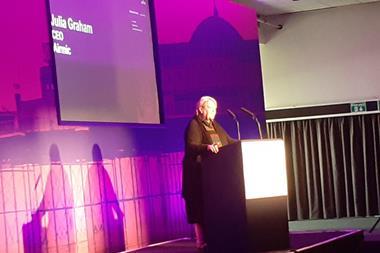Companies need to invest time and money into creating a culture that supports innovation

UK retailers BHS and Austin Reed recently became the latest names on a long list of companies that went bankrupt due to a failure to innovate. Technological advances have accelerated the pace of change, with half of Fortune 500 companies expected to fail if they do not embrace the Internet of Things, Accenture Internet of Things Center of Excellence director Senthil Ramani told delegates at a recent StrategicRISK Forum.
Creating the right business environment for innovation is therefore vital to all businesses. But while most companies recognise the need to innovate, many seem to struggle to find the best ways to do so.
According to Karen Morris, strategic advisor at DUAL International and formerly chief innovation officer at AIG, companies need to be clear about what they are innovating for and then devise appropriate supporting strategies and tactics.
To create a culture that supports innovation, companies will have to invest time and money into systems and processes.
This also means investing in their workforce, as innovation is delivered by teams. “How robustly you build teams for innovation is everything,” Morris explains. “Strong, enabled and appropriately educated teams can tackle most innovation obstacles including the much recited ‘fear of failure’.”
Fear of failure might make companies fixated on innovation, but Morris warns against obsessing over ideas or looking for the brilliant innovator as a panacea. “Most ideas, in isolation, are useless. It is in the process of combining and recombining, deconstructing and reassembling with a view to solving a problem in a context that innovation breakthroughs happen.”
Georgina Oakes, research and development manager at Airmic, adds that innovation must be a strategic goal for the organisation, with clear accountability and leadership at the top level.
“All employees should have an incentive to identify evolving risks and consider how new products could be developed – rather than just focusing on ‘innovation hubs’ within organisations,” she says.
“Innovation takes time, commitment and significant resource – and doesn’t always bring in immediate high returns. Companies need to be aware of the need to allow staff to fully explore routes to innovation.”
Time constraints, however, often inhibit innovation. Consumed by the immediate demands of the business, senior management cannot find sufficient time to envisage what lies ahead in future, Morris says.
“Faced with the option of focusing on near-term, predictable, measurable outcomes compared with uncertain, risky, inchoate opportunities, the cautious business leader inclines to the former.”




















No comments yet